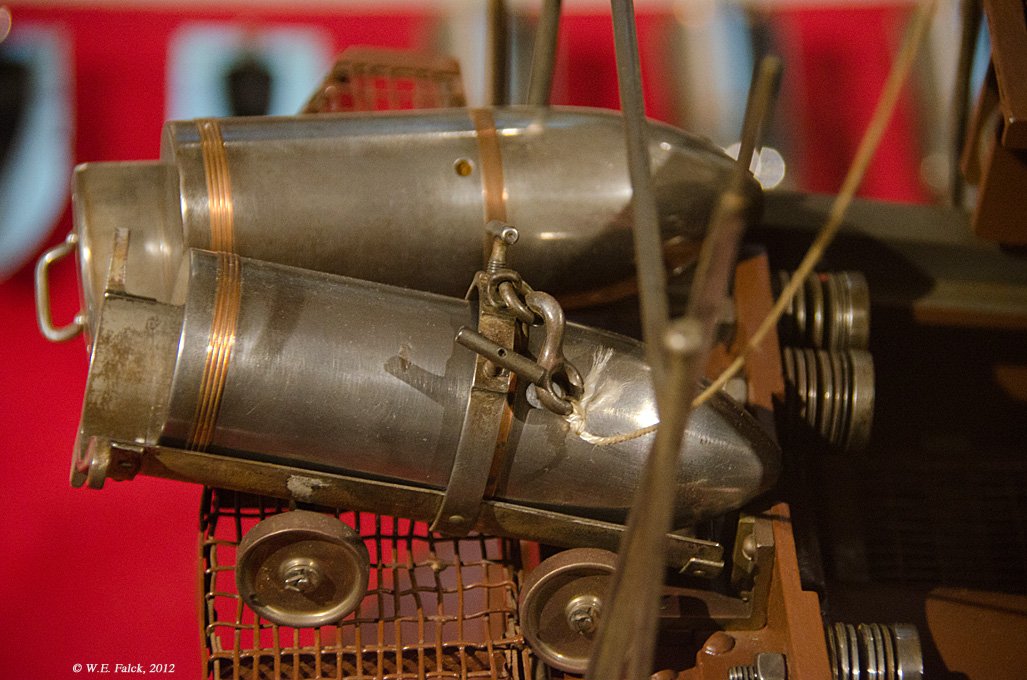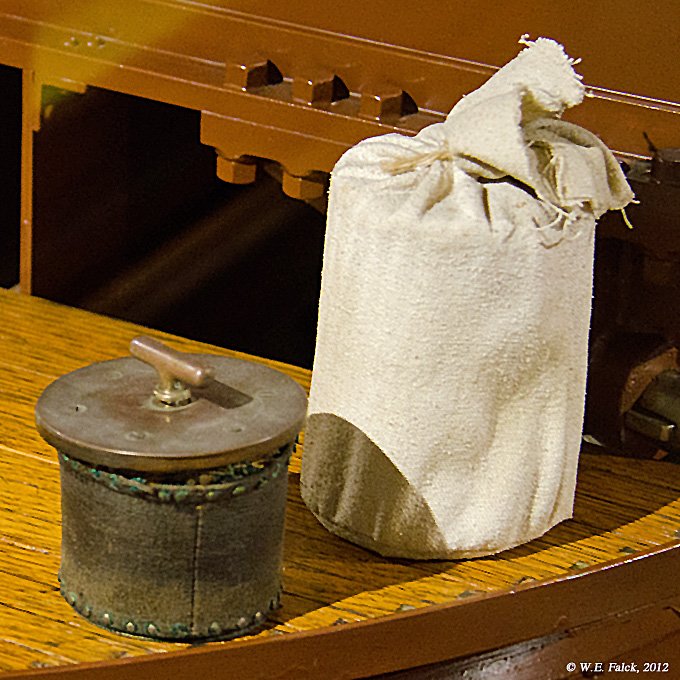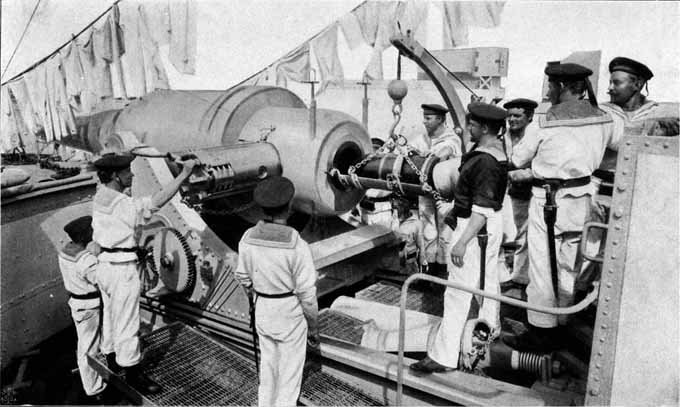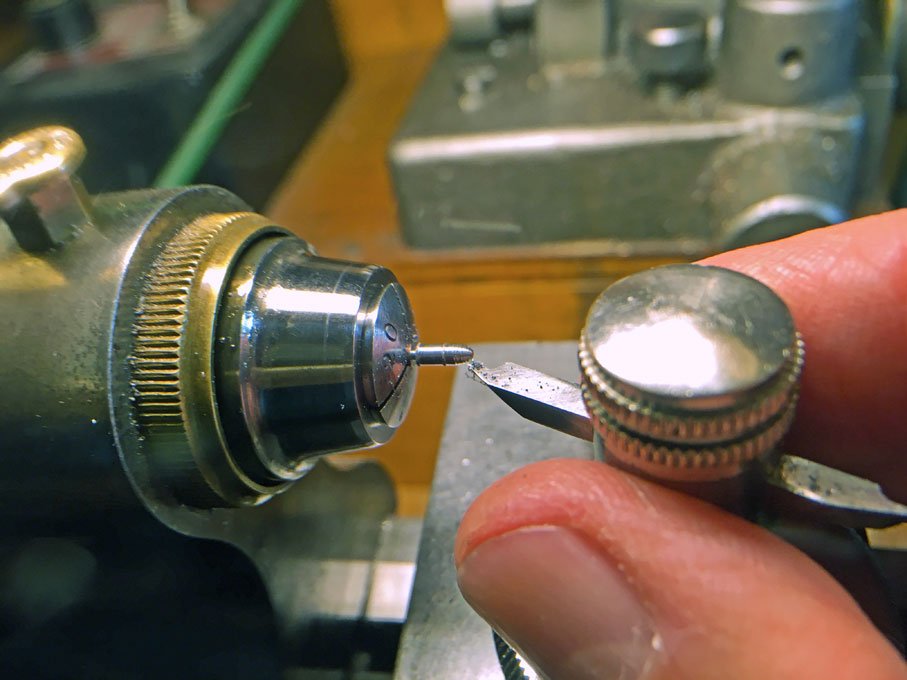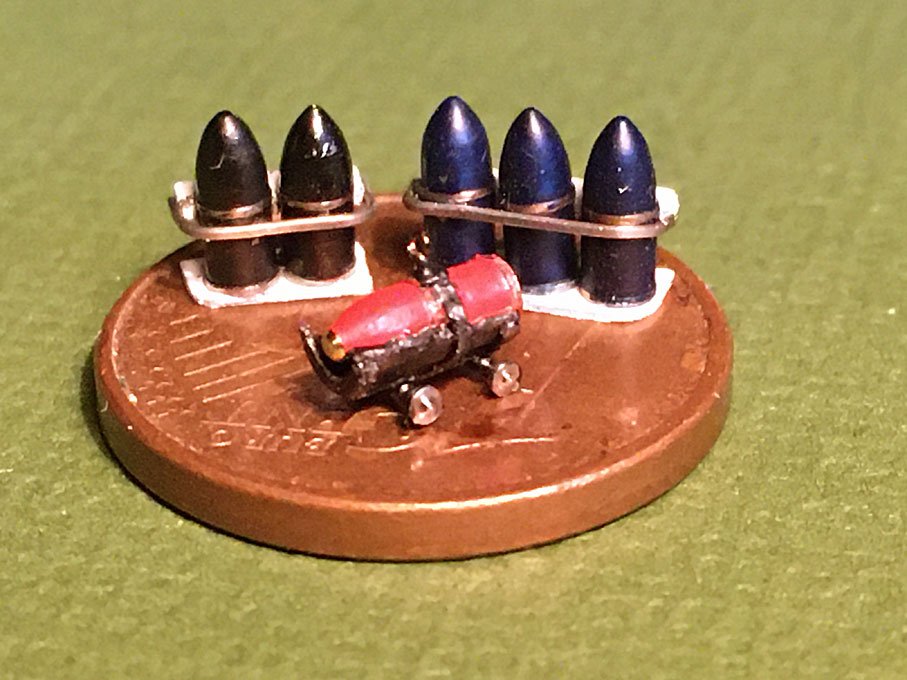-
Posts
6,358 -
Joined
-
Last visited
Content Type
Profiles
Forums
Gallery
Events
Everything posted by wefalck
-

Modelling locks or Latches
wefalck replied to jackieofalltrades's topic in Metal Work, Soldering and Metal Fittings
Thanks, but I don't think, my wife would like this ... -
https://www.finemodelships.com/ is indeed a kind of co-operative marketing site, as I understand. I do know its operator Dr. Michael Czytko (he is a member of our German shipbuilding history association), but as I am not interested in buying or selling, I don't know anything about the modus operandi of the site. Some links also point to www.modelships.de. When you do a search for Rainer Wedel on the Internet, a few links pop up. He seems to be a former pilot and to work also for the German Maritime Museum in Bremerhaven as a shipmodel builder. Most of his subjects seem to have been taken from NIELSEN, C. (1973): Danske Bådtyper.- 152 p., København (Høst and Søns Forlag). NIELSEN, C. (2006😞 Danske Bådtyper.- CD-ROM, Helsingør (Handels- og Søfartsmuseet). The CD-ROM can be ordered from the museum Web-site. I don't know anything about the oher guy, a Dutchman, Jan van den Heuvel. However, there are abundant resources on Dutch vernacular craft, if it is that what you are interested in.
-

Stoves/Ovens on ships in the 1600s and Onward
wefalck replied to acaron41120's topic in Nautical/Naval History
The (digital) archives of the Danish Naval yard in Copenhagen are full of detailed drawings for stoves and baking ovens from the 18th century onward. They became more and more sophisticated also with the view to make them fire-safe. -
Thanks, Keith. I had a look over the oldest known version of the plans and counted 60 rounds in total, not counting the (assumed) two drill dummies. It seems that the barrels only lasted for a few hundred shots, before the powder chamber and some of the rifling was eroded. I doubt that the guns ever fired that many life shots. The shells were also rather expensive. Most of the time aiming practice was done with hand-gun barrels mounted into the gun, but the arrangements for this particular gun are unknown.
-
It certainly requires less practices and dexterity than the T-rest, though sometimes I still use it. The strange thing is that Lorch, Schmidt & Co. seem to have been the only manufacturer that ever offered such a hand-held toolrest - perhaps the professional watchmakers frowned on it, being proud of their capabilities with lozenge-shaped graver.
-
Thanks, gentlement ! Druxey, the Lorch graver-holder was supplied together with a small table, that has a T-slot on its underside and fits on the holder for the so-called T-rests on 40 mm centre-height so-called D-bed watchmakers lathes. On my 50 mm centre-height WW-style watchmakers lathe this would be too low, but I have a special raising block that clamps onto the bed. Here are my specimen on http://www.lathes.co.uk: http://www.lathes.co.uk/lorch/img35.gif Recently, Mr. Gottwaldt (gg-tools) has started to sell a reproduction of this graver-holder, but without the table it seems: https://www.ebay.de/itm/28074-GG-Tools-STICHELHAUS-STICHELSTOCK-FUR-DREHSTAHL-Uhrmacherdrehbank-DREHBANK/143752548776?hash=item217851d1a8:g:BZMAAOSwyRdb6dZu. However, it is adjustable over a greater height range than the original and therefore can be adapated to different types of lathes. One would just need to provide a flat and smooth surface that is exactly in the plane of the lathe axis, e.g. a plate screwed onto the cross-slide.
-
Thanks, Keith ! ************* Ammunition and ammunition handling Thanks to a book published in 1886 by Carl Galster, we are relatively well informed about the ammunition of the German naval artillery of that time. The WESPE-Class was the only class of ships fitted with the Rk 30,5 cm/l22. According to Galster, three types of projectiles were available for these guns in the late 1870s/early 1880s: a) armour-piercing shells, b) shells with a time-fuse, and b) dummy shells for gun-drill. All shells had two copper guiding rings that would be squeezed into the rifling. One ring sat shortly above the bottom and the second ring where the cylindrical part would transit into the ogival part of the shell. The armour-piercing shells were cast in a particular way to harden the steel from which they were cast. They were hollow, but with only a relatively small chamber for powder in the rear part. The nose was cast solid. However, at that time functional impact fuses were not yet available, so the shells were filled with a mixture of sand and sawdust to give the approximate weight distribution as a powder charge would give. The threaded hole for the fuse in the bottom was simply plugged. Armour-piercing shells were painted blue. The ordinary shell had thinner walls and consequently a larger power-charge. The nose was threaded for time-fuses. It is beyond the scope of this building-log to discuss the fuses in detail, it suffices to say that these were made from brass. Shells were painted red and when actually charged with powder marked with a black ring around the nose. Shells in handling cradles on the Copenhagen demonstration model (note that in real life the shells would be painted and the museum placed them the wrong way around into the cradle) Dummy shells were ‘seconds’ of ordinary shells filled with a sand-sawdust mixture to give the same weight as a real shell. The hole in the nose was closed with a wooden plug. They were painted black all over. Powder charges were supplied in cylindrical bags. Each bag weighed 46 kg. Up to two bags could be loaded, allowing to adapt the firing range. The bags were stored and handled in cyclindrical boxes lined with zinc sheet or where made from German silver. Powder bag and tampion at the demonstration model in Copenhagen A total of five shells were kept ready in the open barbette. I would assume that these would be only the armour-piercing and drill ones, as the fuse of ordinary shells would be rather exposed to the elements. I set out to make six shells in total, three armour-piercing and two drill-shells, that were stored in their respective racks in the barbette. The sixth is an ordinary shell to be placed in the shell-cradle under the crane. My preferred steel in the workshop are copper-coated welding rods. The copper-coating is very convenient here, as their diameter of 2 mm is exactly the scale diameter over the copper guiding rings. The nose was turned free-hand with my special Lorch, Schmidt & Co. graver holder. The shells are 4.8 mm long. For the live shell, a little brass button was turned and inserted into a pre-drilled hole in the nose. Free-hand turning of the shell nose It not clear, how the heavy shells (weighing around 330 kg) were handled inside the ship and hoisted to the level of the barbette floor. The crane on the gun-carriage does not actually reach over the access-hatch to the shell-store through which the shells presumably were hoisted. The drawings are not clear on the various hatches in the barbette and over the shell-storage, because of various elments being hidden behind others and therefore not drawn. I will have to live with this ignorance. On the decks, the shells were wheeled around in trolleys. In the Rigsarkivet in Copenhagen a blue-print (in the true sense of the word) for such a trolley has survived. The trolly forms a cradle that can be hoisted by crane to the breech of the gun. At the rear of the gun two hooks are provided (not realised on the model) into which the cradle hooks. The shell then can be pushed into the gun with a rammer. Gun drill, showing the cradle hooked to the gun (LAVERRENZ, 1900) The parts for the trolley where laser-cut and assembled using zapon lacquer. Effectively the trolley was built around the shell for rigidity. A hole was drilled into the shell to secure the hoisting ring. The racks for the ready shells were laminated together from laser-cut pieces and painted white. The retaining bar was made from flattened pieces of 0.3 mm diameter copper wire that was chemically tinned. In theory, each individual shell should have had its own retaining ring (keeping in mind how important it is to restrain these 300 kg beasts in anything but the slightest sea), but after several attempts to put these into place without damaging the paint-work on the shells too much, I gave up. Flattening the wire reminded me of another pending workshop project, namely a micro-rolling mill to produce metal strips of consistent width and thickness from soft wire. The finished ready-shells (close-up photographs are terribly sobering ...) Reference: GALSTER, C. (1886): Pulver und Munition der deutschen Marine.- 99 p., Berlin (E.S. Mittler & Sohn). To be continued ...
-
Keith, I thought of a galley as well, but the scuttle seemed to be rather large for that purpose. Or did they cook shrimp on board, as they do along the German, Dutch and Danish North Sea coast ? I gather Gary will enlighten us on this subject once North America wakes up again.
-
No comments needed any more on the work ... but I was wondering what a coal-scuttle was doing on such a boat ?
-
I don't want to make myself unpopular, but speak from experience: every time I looked into and even bought (styrene) kits with a view to cut corners in a project, I became dissatisfied and decided that it would not be worth using it, considering the amount of alterations and replacements needed. And this is not a question of available tools and machines (though they help in my opinion). Using styrene sheets and profiles, one can build excellent models with a minimum of tools. It is a pity that kit manufacturers adopted certain conventions (e.g. the deeply grooved decks, prominent wood textures) decades ago in spite of often otherwise quite well researched design bases. The moulds of Revell and others are decades old and when they take a copy, they are still not improved in that sense - I know, it is a question of commercial margin and the stuff sells, which is what counts.
-
Timber-textured ones would be rather unsuitable for ship models, because in real life the shipwrights and later the bo'suns etc. would have done everything to make the wood smooth - see also the discussion above on visible vs. hardly visible details. The molded wood textures (and other engraved details) in model kits satisfy the expectations of innocent buyers, but are utterly overscale in most cases.
-

scribed deck caulk lines
wefalck replied to closehaul's topic in Painting, finishing and weathering products and techniques
Have a look at my suggestions in this very similar thread; -
😂 ... had an Iranian fellow student at university, who really was like that - eventually, he gave up shaving. I have kind of talked into the same void, as shipman. However, we modellers are also in a sort dilemma: if you would behold a real ship equivalent to the typical viewing distance, say at reading distance, you wouldn't see much of the small detail. But then we modellers stick our noses close to our models and then you should see the details, but they are not there. Effectively, we have to design for a multitude of viewing distances, also because the eye (and brain) instinctively looks for things that should be there, even if they objectively would not be visible. This means we have to make compromises - unless you are building a real box diorama with a fixed viewing angle and distance. I have not finally decided on the solution for my current project in 1/160 scale, but lightly engraved the deck made from bakelite paper with a sharp V-shaped graver. Any raised burr was removed by rubbing the deck with steel wool. I will then fill these lines with black acrylic paint and rub the excess down with steel wool. This gives a kind of pre-shading effect as the plastic modellers are calling it. After that I will spray-paint the deck with acrylics. If perceived necessary, I will re-line the seams with burnt umber acrylics using an old-fashioned drafting pen. Different light washings with white and burnt umber will distinguish between different planks and also tone down the seams. Hopefully this procedure will result in near-to-scale seams, which in real life would be somewhere between 5 mm and 10 mm wide. BTW, these seams would be slightly sunken-in during cold and/or dry weather and slightly standing proud of the deck during wet and/or warm weather due to the shrinking/swelling of the wood.
-
Looking good. I like the translucent qualitiy, just like the real thing ! Just a question: you put the bolt-rope inside the seams around the sail. Do you have a source for this - somewhat unusual - arrangement ?
- 72 replies
-
- fishing boat
- Barco Catalan
-
(and 1 more)
Tagged with:
-

15' Dinghy by Bedford - FINISHED - 1:1 scale
wefalck replied to Bedford's topic in Non-ship/categorised builds
Well, that's an offer ... never made it 'down-under' so far, came close to it couple of times, but in the end the business trip was cancelled for one reason or the other. -

15' Dinghy by Bedford - FINISHED - 1:1 scale
wefalck replied to Bedford's topic in Non-ship/categorised builds
Well, will be retiring to an appartment overlooking the old centre of Valencia - unfortunately not much boat-building space there (but I plan to have a small separate model workshop ) and not so easy sailing off the long open coast there. One needs something sturdy like the Catalan boat in another thread here, if one goes for something more traditional. -
I think this paper is sold over here also as 'layout-paper' and seems to have 75 g/m^2 regardless of manufacturer. As there are six A4 sheets (the same size more or less as yours), one sheet weighs 12.5 g. On the other hand taking 13.5 lb x 450 g/lb = 6075 g for 500 sheets works out 12,15 g per sheet. So we seem to talk about the same kind of material, more or less. It has an interesting texture and properties, but may be rather heavy for my own purposes.
- 72 replies
-
- fishing boat
- Barco Catalan
-
(and 1 more)
Tagged with:
-

15' Dinghy by Bedford - FINISHED - 1:1 scale
wefalck replied to Bedford's topic in Non-ship/categorised builds
Excellent workmanship ! And, if this is still possible, I am growing more and more envious of you having such a nice boat ... -
The sail is looking good. I have used the technique of making sails from individual panels and with re-enforcements attached for many years with silk-paper and silk-span fabric (soaked in paint). That paper you are using looks interesting and I have to see, whether something like this is available over here in Europe. It says 13.5 lb on it, but per what ? Here we normally gauge paper in grammes per square metre. I don't think mediterranean sails were ever 'tanned'. No real need for it, as it is sunny and dry for most of the year, so that sails would dry quickly and don't need to be stored wet. Neither do they freeze. However, in some regions they did paint their sails, for decorative reasons, but also for apotropeic ones, i.e. to protect against evil with religious or magic symbols. Rather than using a single wire, you could also use twisted (copper) wire and paint it suitably. Another option would be to fiddle a stiff molybdenum or steel piano-wire through the centre of a rope.
- 72 replies
-
- fishing boat
- Barco Catalan
-
(and 1 more)
Tagged with:
-
Fantastic work - as usual ! I think you were lucky that they didn't fit her with deep-buttoned cushions - which is kind of a pity on such classy boat.
-

I made some shrouds for 1/450 Victory.
wefalck replied to modeller_masa's topic in Masting, rigging and sails
His book has been a bible for me in many respects since it came out in the mid-1980s. It's a pity that he kind of deviated from small-scale shipmodels into carving miniature sculptures, even though the sculptures are superbly executed. Cutting wires (for separating damaged glass covers from the LCD-screens of mobile telephones) are usually molybdenum and extremely hard and tough. They easily damage cutting pliers and are difficult to cut. I score them with a scalpel blade and then bend them until they break. The advantage is that they have a goldy sheen, are springy, and are available down to 0.02 mm easily on ebay etc. I have a whole selection of diameters in stock for simulating brass rails and the likes in small scales. As has been discussed recently at various places here in the forum: shellac solution and the lacquer used to coat silver and brass ware to prevent it from tarnishing, zapon-lacquer, make a very good glue and metal primer. I also use it to secure rigging etc. It is a material that has been used for virtually centuries by clockmakters and silversmiths for various purposes. -

I made some shrouds for 1/450 Victory.
wefalck replied to modeller_masa's topic in Masting, rigging and sails
Sorry, Allan, to make a slight correction: the wire he uses is NiCr, i.e. nickel-chromium, also know as Constantan (a brand name). This wire, in principle, is available in diameters down to 0.04 mm or so, but is rather expensive. Its main use is for temperature-constant resistors and in electrical heaters, toasters etc. May be not so easy to find in the consumer market. If you live in an university city, there may be a supplier for lab-equipment that might have it. Otherwise, one can try repair-shops for electrical household goods. Or, of course, the Internet.
About us
Modelshipworld - Advancing Ship Modeling through Research
SSL Secured
Your security is important for us so this Website is SSL-Secured
NRG Mailing Address
Nautical Research Guild
237 South Lincoln Street
Westmont IL, 60559-1917
Model Ship World ® and the MSW logo are Registered Trademarks, and belong to the Nautical Research Guild (United States Patent and Trademark Office: No. 6,929,264 & No. 6,929,274, registered Dec. 20, 2022)
Helpful Links
About the NRG
If you enjoy building ship models that are historically accurate as well as beautiful, then The Nautical Research Guild (NRG) is just right for you.
The Guild is a non-profit educational organization whose mission is to “Advance Ship Modeling Through Research”. We provide support to our members in their efforts to raise the quality of their model ships.
The Nautical Research Guild has published our world-renowned quarterly magazine, The Nautical Research Journal, since 1955. The pages of the Journal are full of articles by accomplished ship modelers who show you how they create those exquisite details on their models, and by maritime historians who show you the correct details to build. The Journal is available in both print and digital editions. Go to the NRG web site (www.thenrg.org) to download a complimentary digital copy of the Journal. The NRG also publishes plan sets, books and compilations of back issues of the Journal and the former Ships in Scale and Model Ship Builder magazines.




